Vatnshellir
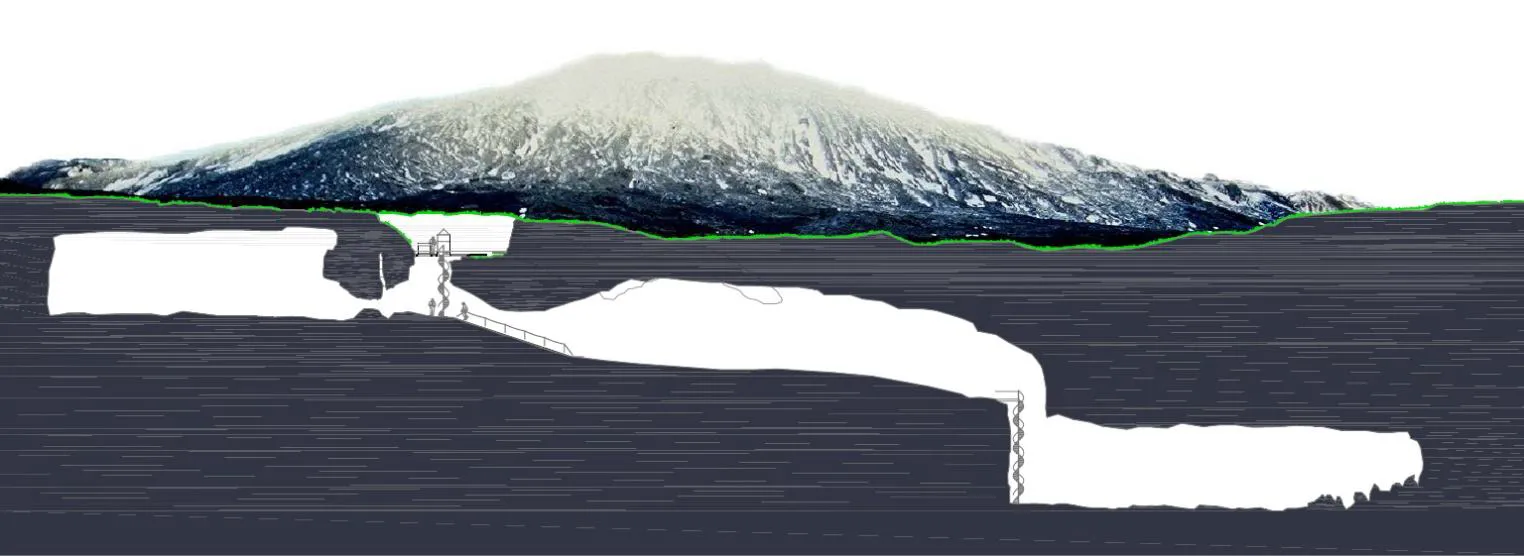
Summit Adventure Guides oversee all opporations and visits to Vatnshellir cave. Informations about visits can be found here.
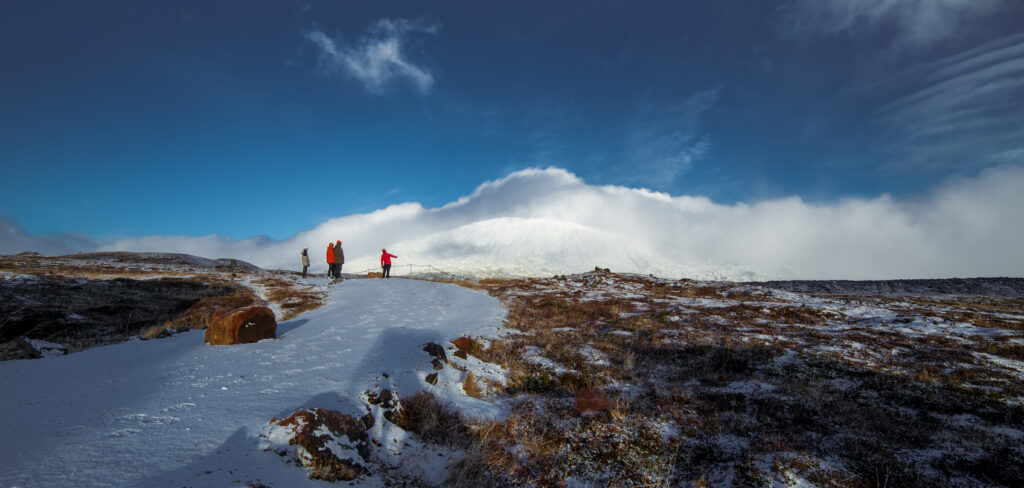
Lava tube
Vatnshellir cave is a lava tube. Lava tubes form while the lava is still flowing and solidifying. The lava field and the cave are believed to be 5-8000 years old. Vatnshellir is about 200 m long. The cave is both wide and the ceiling is high. The cave has been made accessible with a spiral staircase. The cave can only be visited with a guide.
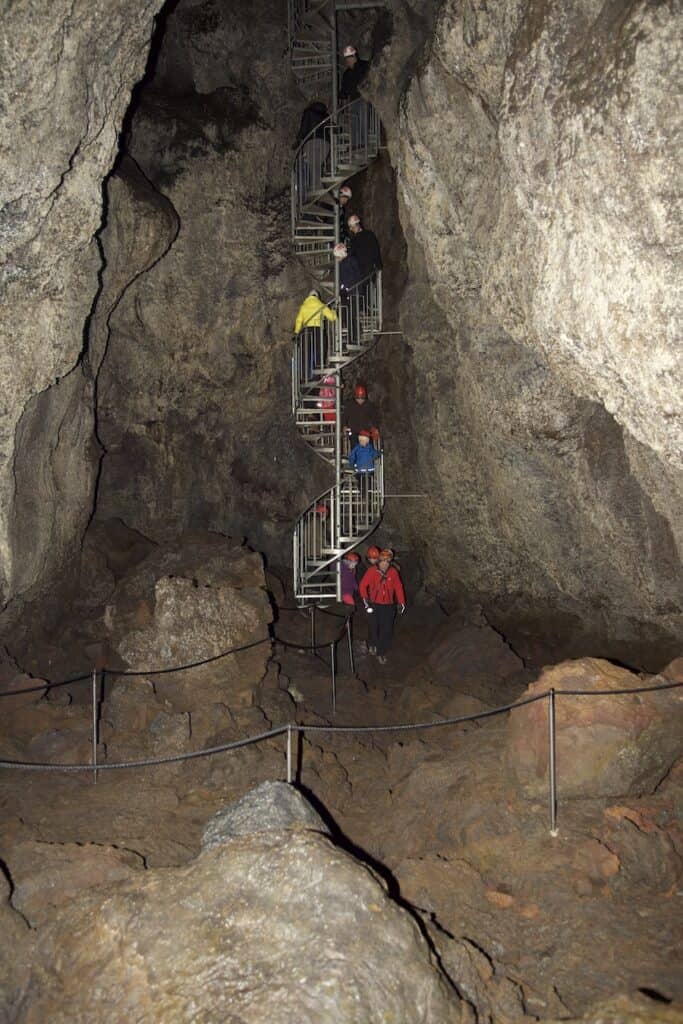
The enrichment of education and knowledge.
According to the ideas of the protection management plan of Snæfellsjökull National Park the Environmental Agency of Iceland decided to start project Vatnshellir. The project was seen as an opportunity to enrich education and knowledge around lava tubes and the values they hold. Public knowledge is an important element in protecting sensitive natural areas such as lava tubes. With project Vatnshellir the public gained access to yet another jewel with inn the National Park.
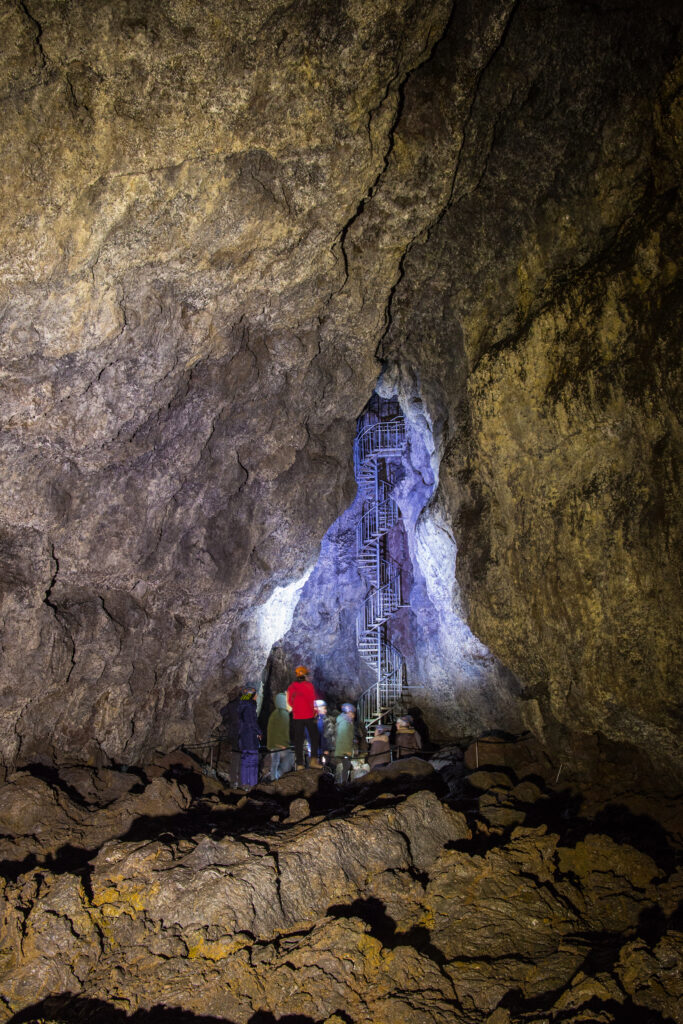
What is there to see?
Vatnshellir cave is located in Purkhólahraun lava field. The lava field is believed to be one of the most cave rich areas in Iceland. The lava field is classified as a basaltic pahoehoe lava, around 5-8000 years old. For cavities are a part of Vatnshellir cave system. The topmost cave is the original Vatnshellir and the one open to visitations. Further down are Bárarstofa and Vættagangur and deepest down is Iður. Collectively the three deepest caves are called Undirheimar. The total length of the cave is about 200m. The ceiling is about 10 m tall in most places. The lowest part of the cave is about 30m belove the surface. In the ceiling of the cave, especially in Vættagangur a white and colonies of bacteria and fungi can be found. Theas colonies reflect light and seem to shimmer on the walls. Many beautiful lava formations can be found in the cave. Varius forms of lavacicles and lava straw hang from the ceiling, on the wall sills and shelfs indicating the hight of the lava flow can be seen. A lava fall has clearly fallen inn to Iður and remains of the stream form a beautiful patterns on the wall.
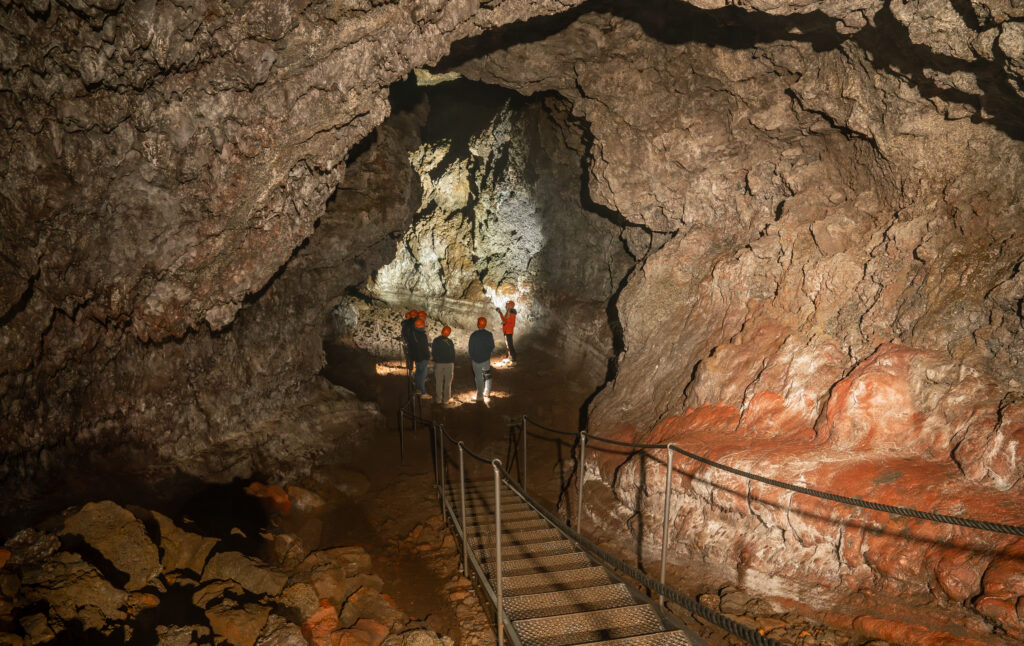
Preparation
People probably first entered the section of Vatnshellir called Undirheimar after 1960. The cave was examined in 1968. Traffic through the cave was minimum up until 1990. With increased traffic within sensitive caves the treat of destruction to sensitive formations becomes grater and that was sadly true for Vatnshellir. Árni B. Stefánsson a cave explorer brought attention to this problem and proposed to the environmental authorities that the cave should be closed to unsupervised visits. In the spring of 2009 Árni held an educational lecture for the public about Icelandic lava tubes hosted by Snæfellsjökull National Park. At the same time a group of people were invited on a trip into the cave, among them Kristinn B. Jónasson the mayor of Snæfellsbær. Kristinn was taken by the wonders of the cave and quickly brought to gather a team to work on making the cave accessible. Árni brought on Hjörleifur Stefánsson to design a pathway into the cave. Þór Magnússon from Gufuskálar was yet another driving force in this project. The floor in Iður is laced with fine pattern. The name Vatnhellir translates to the water cave, the reason for the name is because the people living in Malarrif could always trust on finding water in Vatnshellir. The cows in Malarrif were driven to Vatnshellir to have a drink.
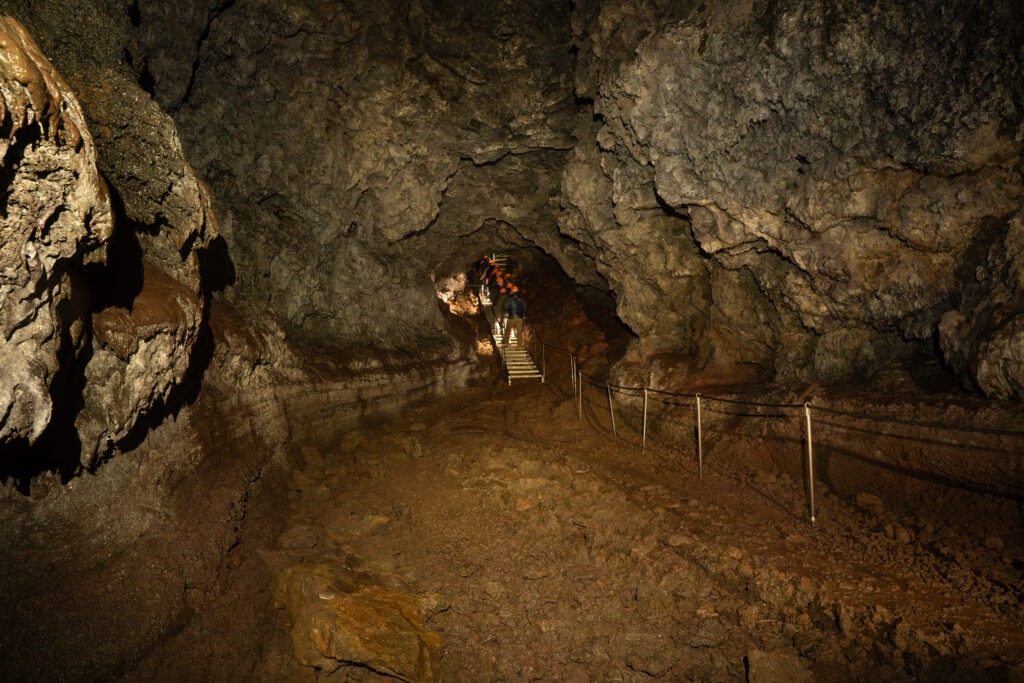
Construction
The caving system is considered to be on 3-4 levels. It was necessary to widen the entry point to allow people to walk upright into the cave. In the fall of 2009 15-20 cubic meters of rocks and soil were removed. After that a platform was constructed over the entry point. Two towers were constructed on the platform. One serves as an entry point to the spiral staircase that leads down into the cave. The other serves as an emergency exit point and an viewpoint to look into Vættagangur. A spiral staircase was constructed to allow access to Iður.
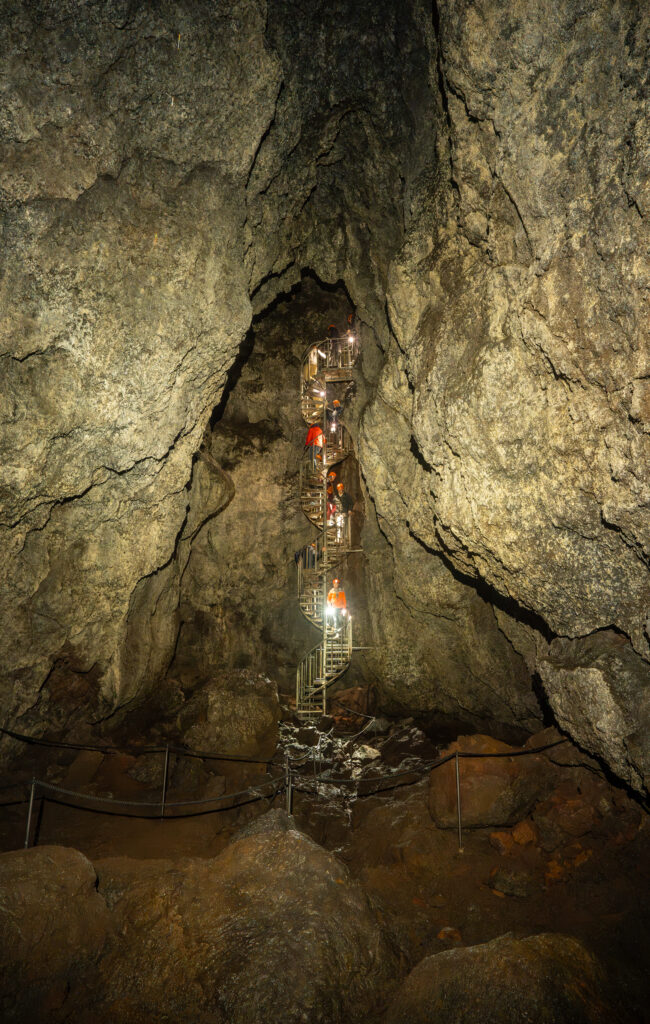
A paved carpark was constructed close to the cave as well as a pathway and a stair down to the platform. A educational sign with information about Vatnshellir and formations of lava tubes was put up next to the carpark. The main constructions around Vatnshellir are now over. How ever some final touches are needed to make the cave both accessible as well as to protect the delicate formation within the cave. The floor in Iðrum is especially sensitive to traffic and it is necessary to mark a good path or build a raised platform there. There are also ideas about permanent lighting within the cave. When installing lights many things must be taken in to consideration like the effects on the lifeforms within the cave.
